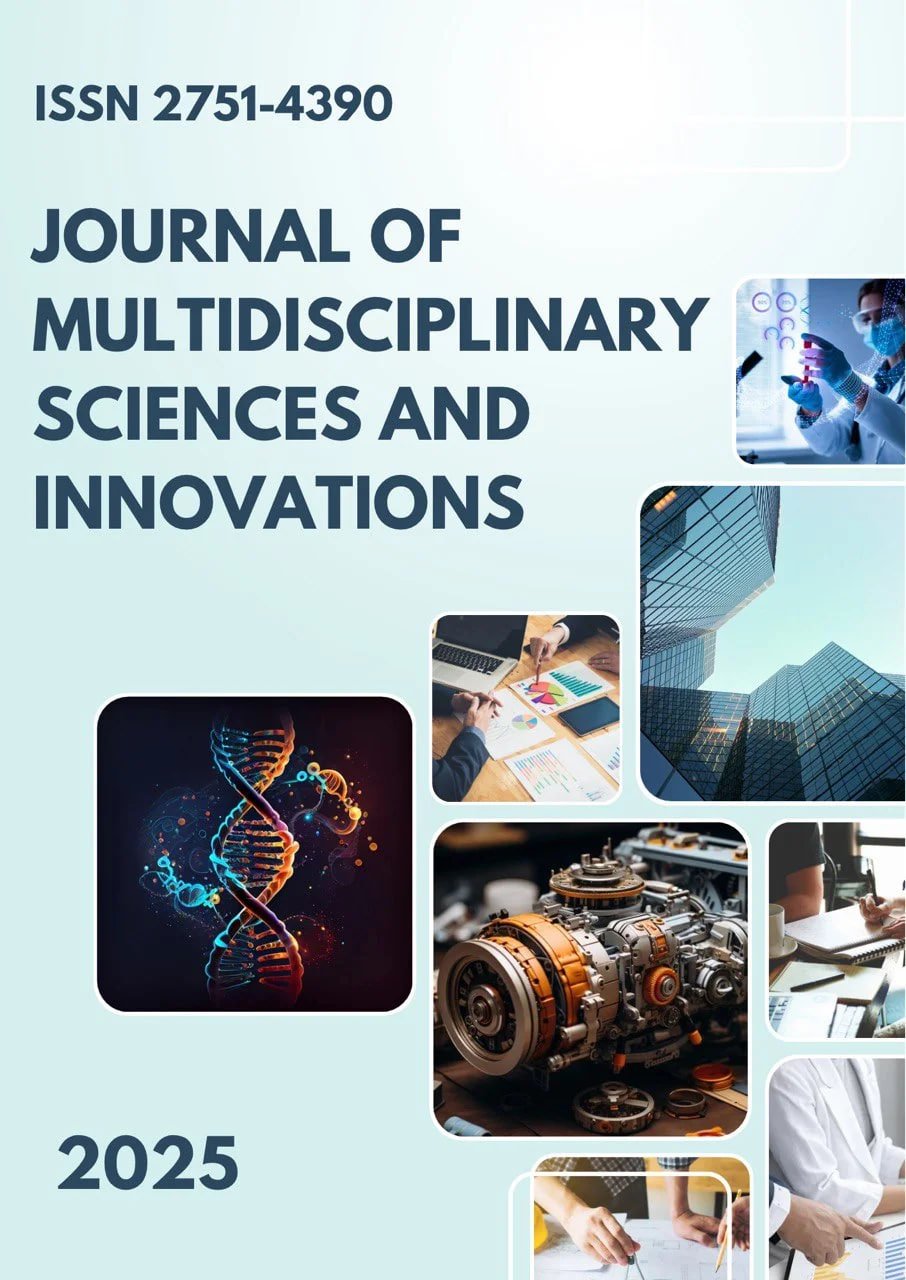ASSESSMENT OF SYNTHETIC APERTURE RADAR (SAR) APPLICATIONS FOR CROP GROWTH MONITORING: OPPORTUNITIES AND CHALLENGES
Main Article Content
Abstract
Synthetic Aperture Radar (SAR) has become an essential technology for agricultural monitoring due to its ability to collect data under all-weather and day–night conditions. Unlike optical sensors, SAR can penetrate clouds, providing consistent and reliable observations of crop growth dynamics. Its sensitivity to crop structure, biomass, and moisture makes it highly suitable for monitoring crop development and detecting stress conditions. However, SAR applications face several challenges, including speckle noise, complex preprocessing workflows, and the difficulty of interpreting backscatter signals across various crop types. Integrating SAR with optical data sources such as Sentinel-2 imagery presents opportunities to improve classification accuracy and temporal consistency. This paper reviews the potential of SAR for crop growth monitoring, emphasizing its advantages, limitations, and future prospects—particularly for arid and semi-arid regions like Central Asia.
Downloads
Article Details
Section

This work is licensed under a Creative Commons Attribution 4.0 International License.
Authors retain the copyright of their manuscripts, and all Open Access articles are disseminated under the terms of the Creative Commons Attribution License 4.0 (CC-BY), which licenses unrestricted use, distribution, and reproduction in any medium, provided that the original work is appropriately cited. The use of general descriptive names, trade names, trademarks, and so forth in this publication, even if not specifically identified, does not imply that these names are not protected by the relevant laws and regulations.
How to Cite
References
[1] K. A. Al-Gaadi, E. Tola, R. Madugundu, and R. Fulleros, “Sentinel-2 Images for Effective Mapping of Soil Salinity in Agricultural Fields,” Curr. Sci., vol. 121, p. 0384, Aug. 2021, doi: 10.18520/cs/v121/i3/384-390.
[2] K. Amankulova, N. Farmonov, K. Omonov, M. Abdurakhimova, and L. Mucsi, “Integrating the Sentinel-1, Sentinel-2 and Topographic data into soybean yield modelling using Machine Learning,” Adv. Space Res., vol. 73, Apr. 2024, doi: 10.1016/j.asr.2024.01.040.
[3] E. Adam, O. Mutanga, and D. Rugege, “Multispectral and hyperspectral remote sensing for identification and mapping of wetland vegetation: a review,” Wetl. Ecol. Manag., vol. 18, no. 3, pp. 281–296, June 2010, doi: 10.1007/s11273-009-9169-z.
[4] N. Farmonov, M. Esmaeili, D. Abbasi-Moghadam, A. Sharifi, K. Amankulova, and L. Mucsi, “HypsLiDNet: 3D-2D CNN Model and Spatial–Spectral Morphological Attention for Crop Classification with DESIS and LiDAR Data,” IEEE J. Sel. Top. Appl. Earth Obs. Remote Sens., vol. PP, pp. 1–34, Jan. 2024, doi: 10.1109/JSTARS.2024.3418854.
[5] R. Krämer et al., “Long-term agricultural land-cover change and potential for cropland expansion in the former Virgin Lands area of Kazakhstan,” Environ. Res. Lett., vol. 10, May 2015, doi: 10.1088/1748-9326/10/5/054012.
[6] A. Balenzano, F. Mattia, G. Satalino, and M. W. J. Davidson, “Dense Temporal Series of C- and L-band SAR Data for Soil Moisture Retrieval Over Agricultural Crops,” IEEE J. Sel. Top. Appl. Earth Obs. Remote Sens., vol. 4, no. 2, pp. 439–450, June 2011, doi: 10.1109/JSTARS.2010.2052916.
[7] S. Najem, N. Baghdadi, H. Bazzi, N. Lalande, and L. Bouchet, “Detection and Mapping of Cover Crops Using Sentinel-1 SAR Remote Sensing Data,” IEEE J. Sel. Top. Appl. Earth Obs. Remote
Sens., vol. 17, pp. 1446–1461, 2024, doi: 10.1109/JSTARS.2023.3337989.
[8] M. Vizzari, G. Lesti, and S. Acharki, “Crop classification in Google Earth Engine: leveraging Sentinel-1, Sentinel-2, European CAP data, and object-based machine-learning approaches,” Geo-Spat. Inf. Sci., pp. 1–16, Apr. 2024, doi: 10.1080/10095020.2024.2341748.
[9] P. Zhang, Y. Ban, and A. Nascetti, “Total-variation regularized U-Net for wildfire burned area mapping based on Sentinel-1 C-Band SAR backscattering data,” ISPRS J. Photogramm. Remote Sens., vol. 203, pp. 301–313, Sept. 2023, doi: 10.1016/j.isprsjprs.2023.07.024.
[10] S. Thapa, V. Garcia-Millan, and L. Eklundh, “Assessing Forest Phenology: A Multi-Scale Comparison of Near-Surface (UAV, Spectral Reflectance Sensor, PhenoCam) and Satellite (MODIS, Sentinel-2) Remote Sensing,” Remote Sens., vol. 13, p. 1597, Apr. 2021, doi: 10.3390/rs13081597.
[11] E. Erdanaev, M. Kappas, and D. Wyss, “Irrigated Crop Types Mapping in Tashkent Province of Uzbekistan with Remote Sensing-Based Classification Methods,” Sensors, vol. 22, no. 15, Art. no. 15, Jan. 2022, doi: 10.3390/s22155683.
[12] A. Mirzaei, H. Bagheri, and I. Khosravi, “Enhancing Crop Classification Accuracy through Synthetic SAR-Optical Data Generation Using Deep Learning,” ISPRS Int. J. Geo-Inf., vol. 12, no. 11, Art. no. 11, Nov. 2023, doi: 10.3390/ijgi12110450.
[13] G. M. Foody, “Status of land cover classification accuracy assessment,” Remote Sens. Environ., vol. 80, no. 1, pp. 185–201, Apr. 2002, doi: 10.1016/S0034-4257(01)00295-4.

